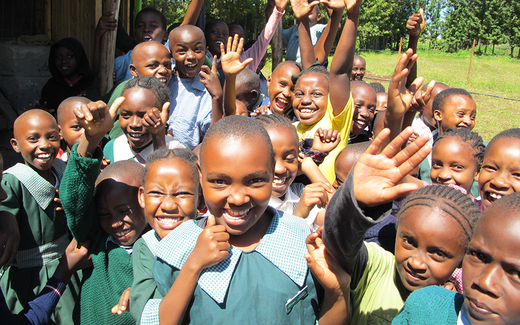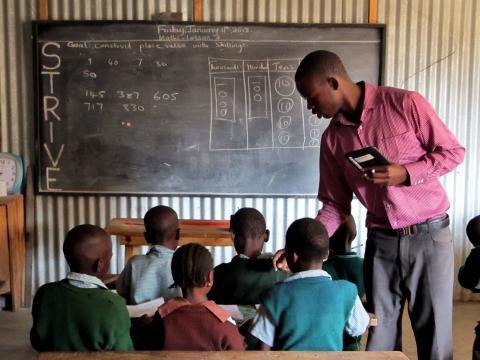
For those of us that live in the United States and other developed nations, good quality education is something we take for granted. But such is not the case in most third world countries. In places like Kenya, access to schools is severely limited and even those that do exist are producing poor academic results. Now, thanks to an innovative 'out of the box' solution provided by Bridge International Academies, there may be hope.
Founded by US-based Jay Kimmelman, Shannon May, and Phil Frei in 2008, the schools take a different approach to education, starting from the buildings they are housed in. Instead of requiring solid brick structures, they sport tin walls that are supported by plywood frames, a couple of bathrooms and a small outdoor courtyard for the kids to play in. This allows each campus to be built for a mere $1,800 USD, which means that they can 'pop' up in every neighborhood. The classroom equipment is also kept to the bare minimum, comprising only of basic tools like chalkboard slates and clay.

To ensure that all students get the best possible education, the Bridge philosophy is to approach teaching like Starbucks approaches coffee making - Complete standardization. Hence, instead of seeking out highly qualified educators, their faculty comprises largely of high-school graduates, who are trained to manage classrooms and teach the curriculum per the strict standards set by the company.
All kids are taught the same academics, right down to the last math problem. Custom-made class workbooks created around the local curriculum, reiterate what is being taught. The learning is further reinforced with low cost classroom tools like brightly colored bottle caps and re-purposed egg cartons for color recognition and basic math skills, as well as, educational toys like building blocks, paper dolls and puzzles, to help develop fine motor skills.

The educators are also held to the highest level of accountability via a Tablet, which as you may have guessed is the one and only piece of hi-tech equipment in a Bridge Academies classroom. Not only is it used to monitor that the day's lesson plan is being taught at the right pace through real-time tracking of the scripted lessons, but also, to ensure that each session starts on time. If there is a delay of more than 15 minutes, the teacher is called upon by a Bridge 'technician' to investigate the cause and try to get the class back on track.
In addition, the Tablet also keeps a record of attendance, assessment scores and pupil comprehension on a weekly basis. Any drop in performance requires immediate investigation and may even result in the teacher's pay being docked. On the flip side, a higher than expected score may make him/her eligible for a bonus. By tracking every element of the classroom's progress, Bridge ensures that their pupils are receiving the best education possible.

And while the approach may sound a little too rigid to some, it is working. Bridge-enrolled students tend to outperform their local counterparts by up to 205% in reading comprehension and 37% in fundamental math skills. Not only that, thanks to the low cost of attending ($5 USD a month), better accessibility and the stellar results, more parents are sending their kids to schools. According to the founders, over 50,000 kids in Kenya are currently attending a Bridge International Academy. This is pretty impressive given that the first school opened its doors in the Mukuru slum in Nairobi, Kenya, just about 5 years ago, in January, 2009. Besides providing the kids with quality education, the company is also creating meaningful jobs for the country's youth.
The success of the Kenyan schools has spurred the group into planning 'pop up' academies all the way from Uganda to Nigeria and even India. By 2025, they hope to reach over 10 million students. What is not clear is if the company that currently provides only elementary school education is planning to use its unique approach for middle and high school as well - We sure hope so!
Resources: Wired.com,bridgeinternationalacademies.com